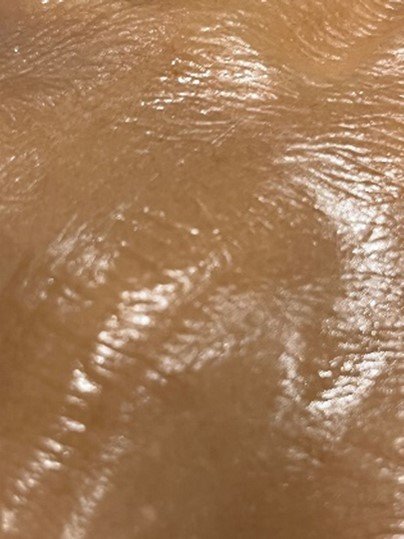Synthetic Tissues
Synthetic tissues have emerged as a groundbreaking technology with wide-ranging applications across various fields of medicine and biomedical research. These artificially created materials are designed to mimic the properties and functions of natural human tissues, offering numerous advantages over traditional models. The development and utilization of synthetic tissues represent a significant leap forward in our ability to study, treat, and potentially regenerate human body parts.
One of the primary applications of synthetic human tissues is in medical simulation. These artificial constructs provide a realistic and standardized platform for training healthcare professionals in various procedures and techniques. From surgical simulations to practicing diagnostic procedures, synthetic tissues offer a consistent and ethically sound alternative to using cadavers or animal models. This application not only enhances the quality of medical training but also allows for repeated practice without the logistical and ethical concerns associated with traditional methods.
In the realm of research, synthetic tissues serve as invaluable tools for studying disease progression, testing new treatments, and understanding complex biological processes. Researchers can create tissue models that replicate specific pathological conditions, allowing for detailed investigations into disease mechanisms and potential therapeutic interventions. These models provide a controlled environment where variables can be precisely manipulated, offering insights that might be difficult or impossible to obtain from living subjects or cadaveric specimens.
The field of regenerative medicine has been particularly revolutionized by the advent of synthetic tissues. Scientists and medical professionals are now exploring ways to create functional replacements for damaged or diseased tissues and organs. This includes the development of artificial skin grafts for burn victims, engineered cartilage for joint repair, and even more complex structures like cardiac tissues. The potential of this technology to address the shortage of donor organs and improve patient outcomes in transplantation procedures is immense.
Drug development is another area where synthetic tissues are making a significant impact. Pharmaceutical companies can use these artificial constructs to test the efficacy and safety of new drugs in a more realistic environment than traditional cell cultures. This approach allows for more accurate predictions of how drugs will behave in the human body, potentially reducing the need for animal testing and accelerating the drug discovery process. Moreover, synthetic tissues can be customized to represent different patient populations, enabling more personalized drug development strategies.
The high impact of synthetic tissues technology is particularly evident in its potential to replace or reduce the use of cadavers and animal models in research and training. While these traditional models have long been considered the gold standard, they come with significant ethical, logistical, and standardization challenges. Synthetic tissues offer a more consistent, readily available, and ethically sound alternative that can be tailored to specific research or training needs.
However, it's important to note that the development of synthetic tissues is a complex endeavor, given the diverse and intricate nature of human body tissues. Each type of tissue in the human body possesses unique mechanical and biological properties that must be carefully replicated in synthetic models. For instance, skin tissue presents a particularly complex challenge due to its multilayered structure and varied properties.
The complexity of skin tissue is exemplified by its three distinct layers: the epidermis, dermis, and hypodermis. Each layer serves specific functions and exhibits different characteristics. The epidermis, the outermost layer, provides a protective barrier. The dermis, rich in collagen and elastin fibers, gives skin its strength and elasticity. The hypodermis, composed mainly of fat cells, provides insulation and cushioning.
Furthermore, skin tissue exhibits anisotropic properties, meaning its mechanical behavior varies depending on the direction of applied force. This characteristic is crucial for the skin's ability to stretch and accommodate body movements. The viscoelastic nature of skin adds another layer of complexity, as it displays both viscous and elastic properties when deformed, allowing it to return to its original shape over time after stress is removed.
The mechanical properties of skin are also highly sensitive to various factors. Age significantly affects skin elasticity and thickness, with older skin generally being less elastic and more prone to damage. The location on the body is another crucial factor, as skin thickness and elasticity vary considerably from one body part to another. Environmental factors such as temperature and hydration levels also play a role in skin behavior, with changes in these conditions affecting the skin's mechanical properties.
Replicating these complex characteristics in synthetic skin models presents a significant challenge for researchers and bioengineers. However, as technology advances, increasingly sophisticated synthetic skin models are being developed that more closely mimic the properties of natural skin. These advancements are crucial for improving the accuracy of medical simulations, enhancing the effectiveness of drug testing, and developing better treatments for skin conditions and injuries.
At ALT LLC we have developed a wide range of synthetic tissues that can be printed and or molded into heterogeneous tissue structures such as the abdominal wall tissue model shown below.
Abdominal Wall Models
As researchers continue to explore the synergy between new materials and advanced processes, the potential applications in fields such as prosthetics, aerospace, and healthcare are expanding rapidly. The ongoing evolution of additive manufacturing promises to not only optimize production techniques but also to pioneer solutions that could enhance performance and functionality in a wide array of industries.
Another multi-tissue example is shown below, Here we have a Cricothyroitomy trainer model with multiple tissues printed, (Cartilage, muscle, adipose)
Cric with surrounding tissues. Heterogeneous tissue printing. For Cric procedure training
Please contact us if you have need for synthetic tissue or more complex heterogeneous anatomical models.
References:
A, K., & A, L. (2016). Mechanical Behaviour of Skin: A Review. Journal of Material Science & Engineering, 5(4). https://doi.org/10.4172/2169-0022.1000254
Gallagher, A. J., Ní Anniadh, A., Bruyere, K., Otténio, M., Xie, H., & Gilchrist, M. D. (2012). Dynamic tensile properties of human skin. 2012 IRCOBI Conference Proceedings - International Research Council on the Biomechanics of Injury, 494–502.



